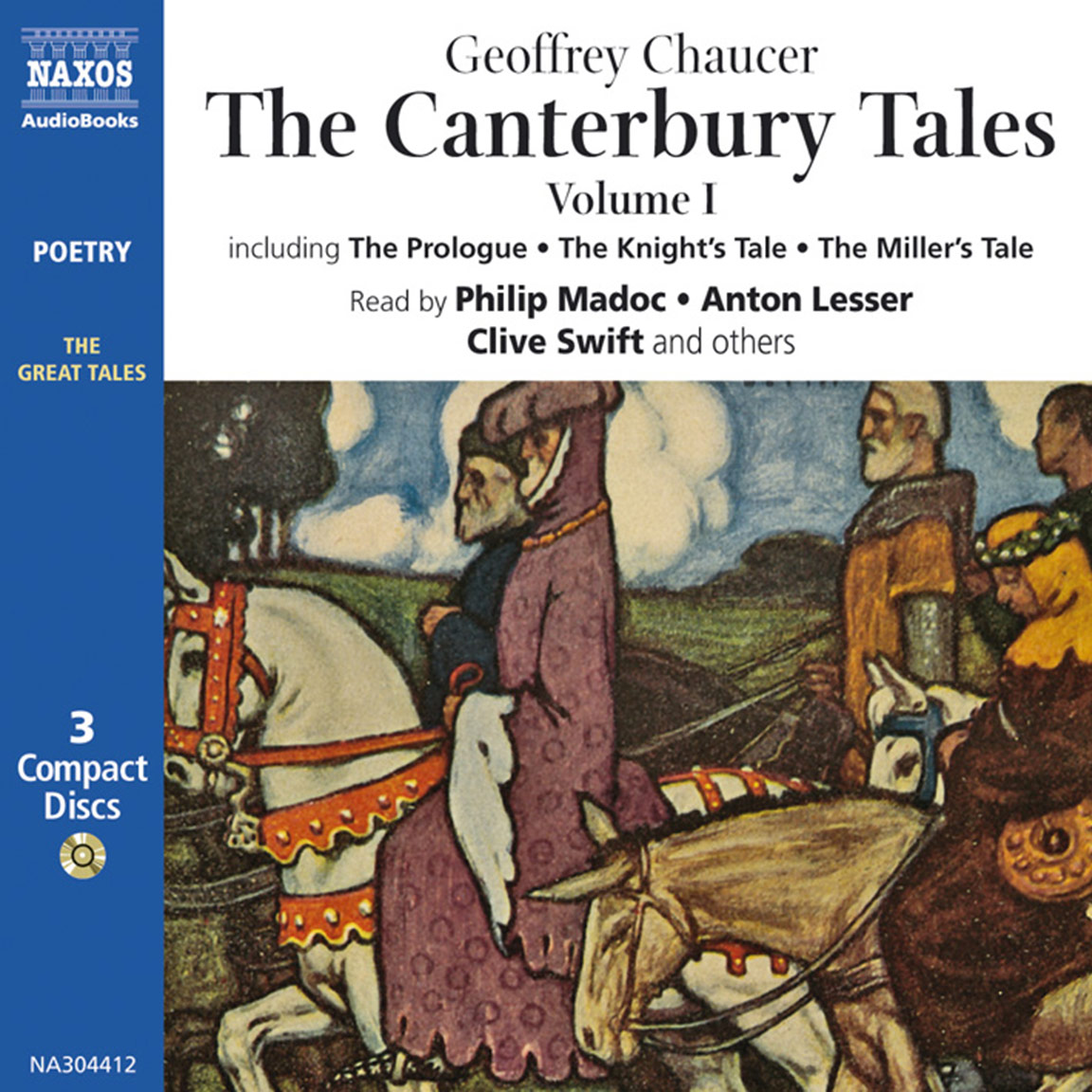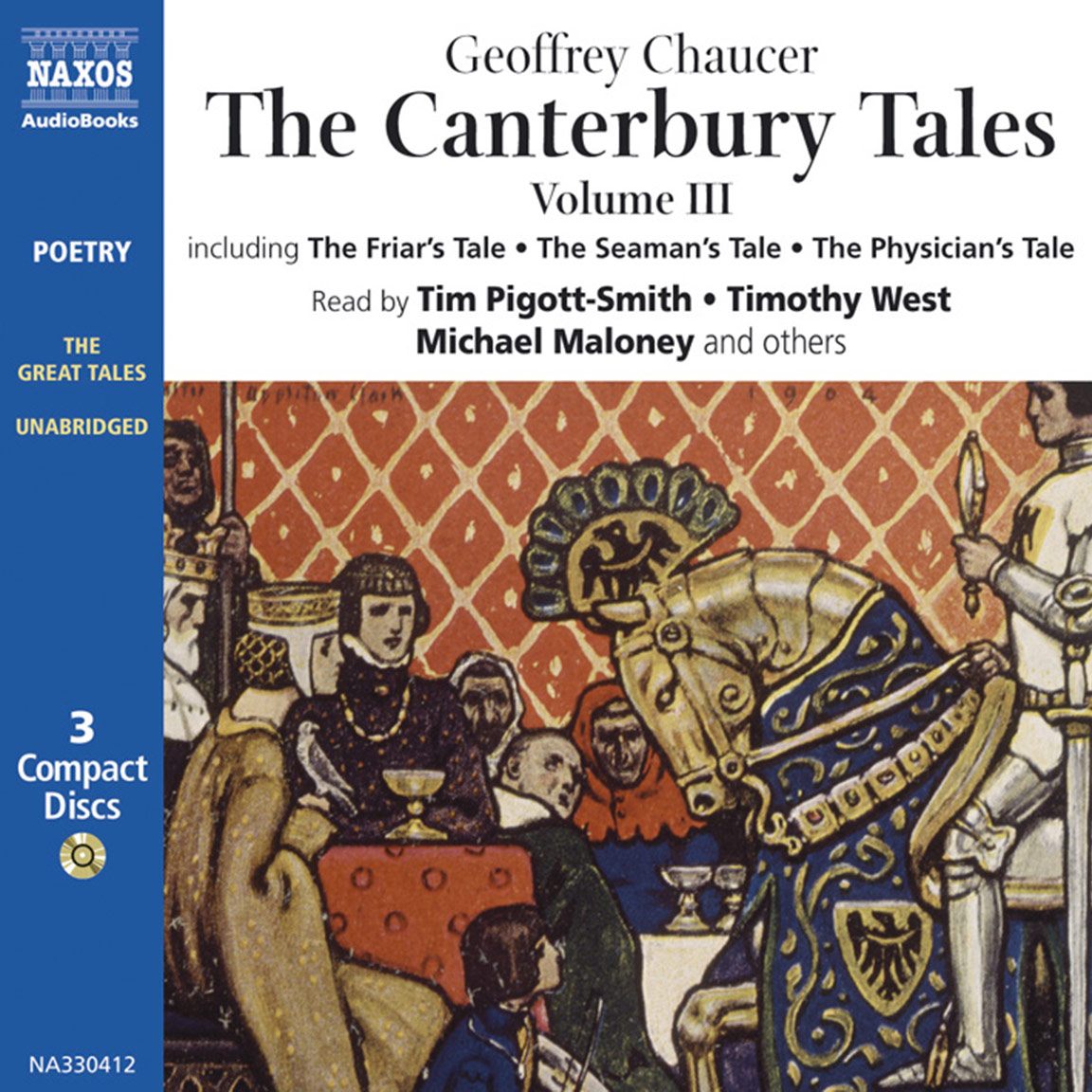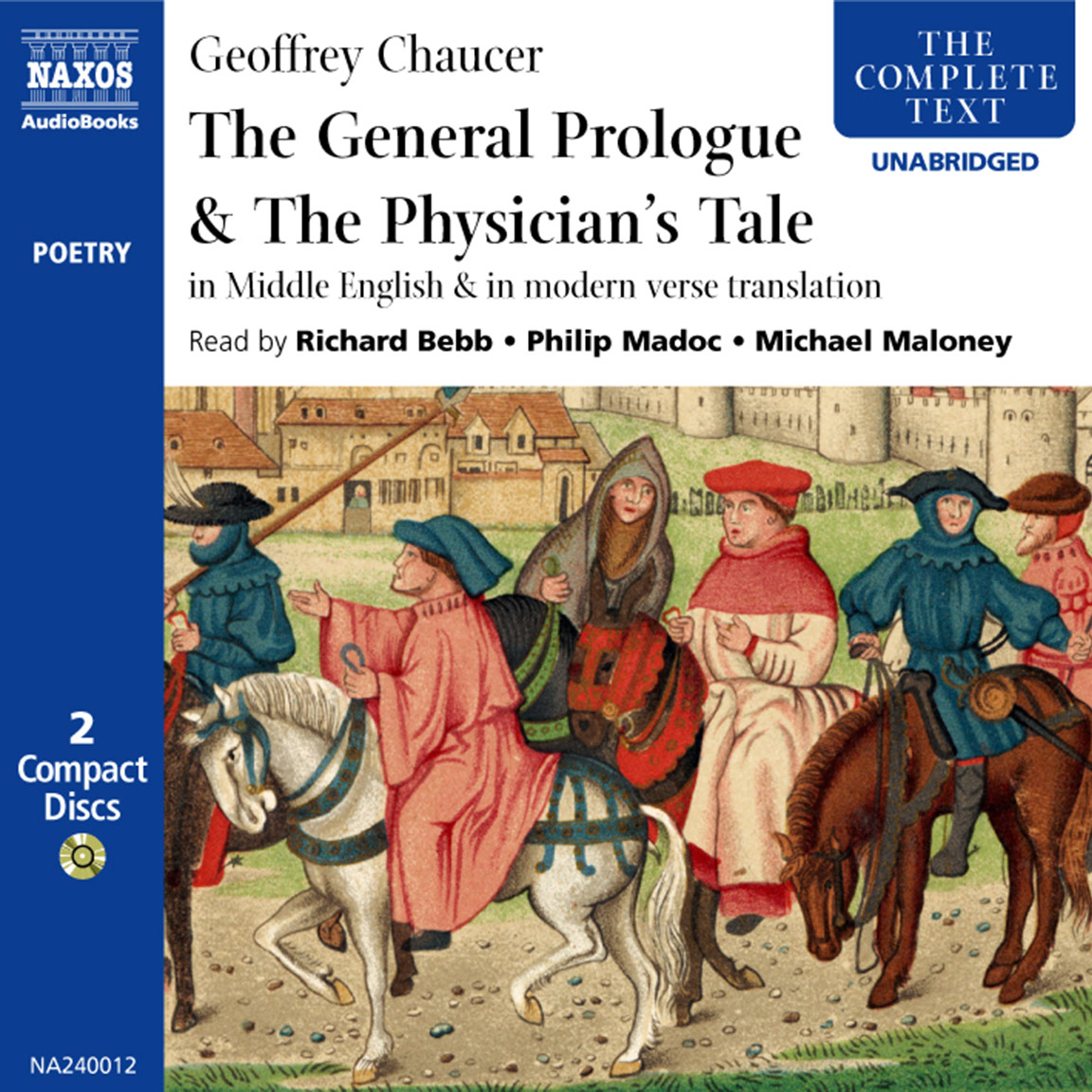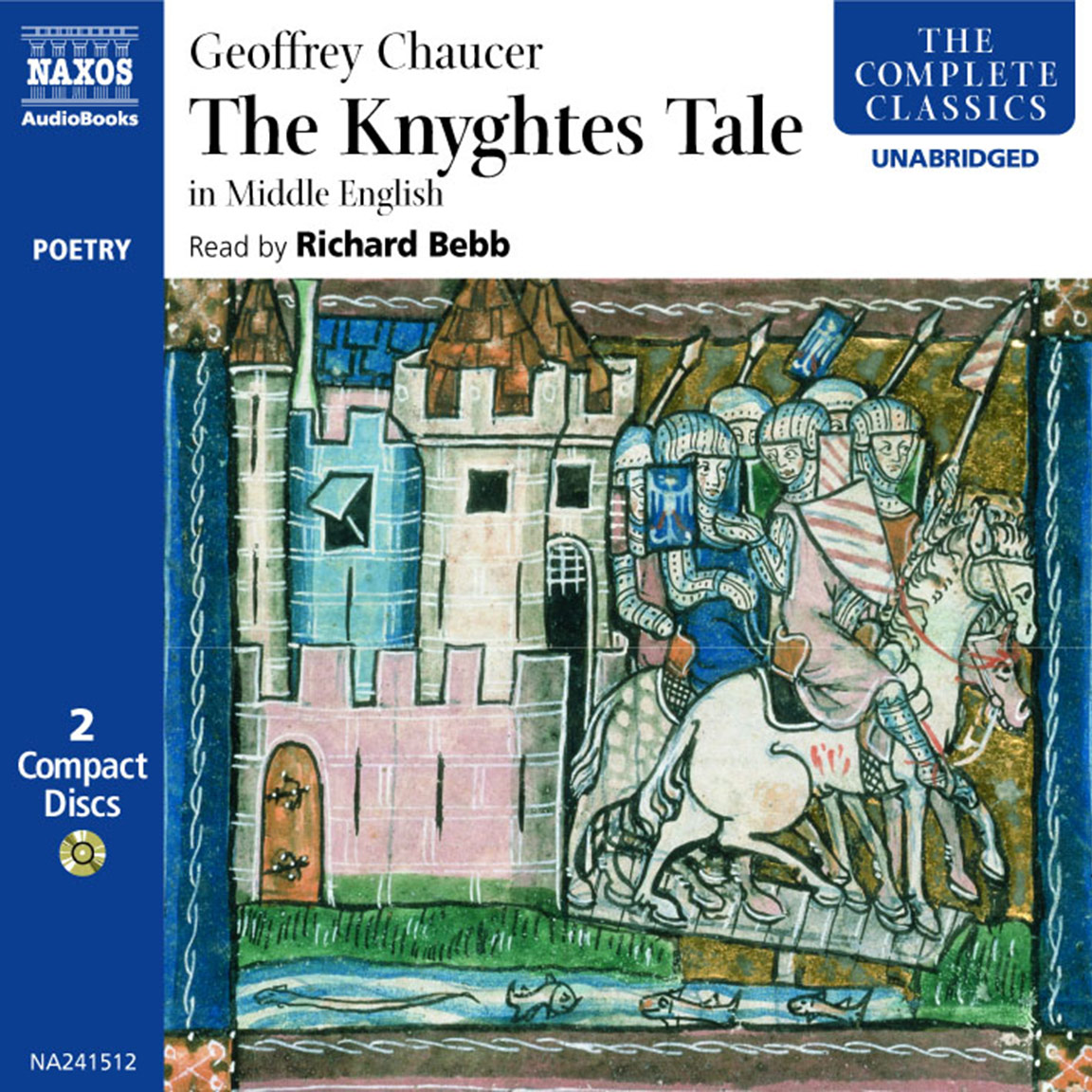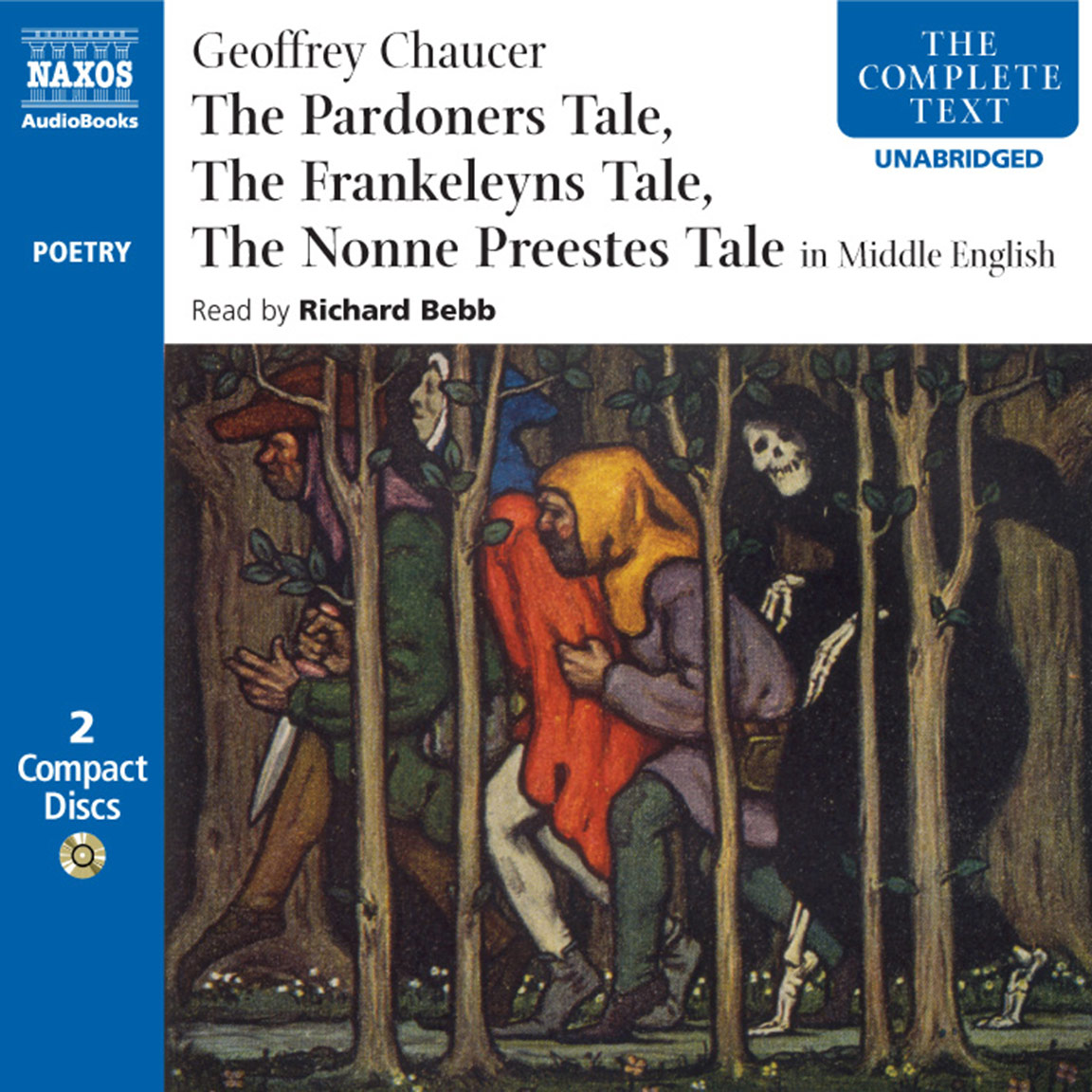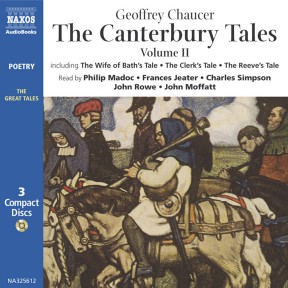
Audio Sample
Geoffrey Chaucer
The Canterbury Tales II
Read by Philip Madoc, Frances Jeater, John Rowe, Charlie Simpson & John Moffatt
unabridged
Four more delightful tales from one of the most entertaining storytellers of all time. Though writing in the thirteenth century, Chaucer’s wit and observation comes down undiminished through the ages, especially in this accessible modern verse translation. The stories vary considerably from the uproarious Wife of Bath’s Tale, promoting the power of women to the sober account of patient Griselda in the Clerk’s Tale.
-
Running Time: 3 h 30 m
More product details
Digital ISBN: 978-962-954-647-2 Cat. no.: NA325612 Download size: 51 MB Produced by: John Tydeman Edited by: Sarah Butcher Translated by: Frank Ernest Hill BISAC: POE022000 Released: February 2002 -
Listen to this title at Audible.com↗Listen to this title at the Naxos Spoken Word Library↗
Due to copyright, this title is not currently available in your region.
You May Also Enjoy
Cast
- Philip Madoc
- Host
- Frances Jeater
- Wife of Bath
- Charles Simpson
- The Clerk
- John Rowe
- The Reeve
- John Moffat
- The Nun’s Priest
Included in this title
The Clerk’s Tale
The Wife of Bath’s Tale
The Nun’s Priest’s Tale
The Reeve’s Tale
Booklet Notes
The Canterbury Tales, written near the end of Chaucer’s life and hence towards the close of the fourteenth century, is perhaps the greatest English literary work of the Middle Ages: yet it speaks to us today with almost undimmed clarity and relevance.
Chaucer imagines a group of twenty- nine pilgrims who meet in the Tabard Inn in Southwark, intent on making the traditional journey to the martyr’s shrine of St Thomas a Becket in Canterbury. Harry Bailly, landlord of the Tabard, proposes that the company should entertain themselves on the road with a story-telling competition. The teller of the best tale will be rewarded with a supper at the others’ expense when the travellers return to London. Chaucer never completed this elaborate scheme – each pilgrim was supposed to tell four tales, but in fact we only have twenty-four altogether – yet, with the pieces of linking narrative and the prologues to each tale, the work as a whole constitutes a marvellously varied evocation of the medieval world which also goes beyond its period to penetrate (humorously, gravely, tolerantly) human nature itself.
Chaucer, as a member of this company of pilgrims, presents himself with mock innocence as the admiring observer of his fellows, depicted in the General Prologue. Many of these are clearly rogues – the coarse, cheating Miller, the repulsive yet compelling Pardoner – yet in each of them Chaucer finds something human, often a sheer vitality or love of life which is irresistible: the Monk may prefer hunting to prayer, but he is after all ‘a manly man, to be an abbot able’. Perhaps only the unassuming, devoted Parson and his humbly labouring brother the Ploughman rise entirely above Chaucer’s teasing irony; certainly his fellow clergy and religious officers belong to a church riddled with gross corruption. Everyone, it seems, is on the make, in a world still recovering from the ravages of the Black Death.
The first tale is told, quite properly, by the most important pilgrim, the Knight, and his story is devoted to the high ideals of chivalry and romantic love. Then the Miller drunkenly interrupts the Host, Harry Bailly, to impose on the company his splendidly bawdy tale about a cuckolded carpenter. As the Reeve listens, he (a trained carpenter himself) becomes enraged by what he sees as a slight on his original profession. So the Reeve’s Tale which follows is a vigorous attempt at revenge on the Miller. Two Cambridge students plan to outwit the fictional miller, Simkin, who grinds their college’s corn and regularly takes a dishonest cut; at first, Simkin gets the better of the undergraduates, but the tale reaches a brilliantly farcical conclusion in which the two young men seduce both the miller’s wife and his young daughter and give Simkin a sound beating.The comic world of the tale is unsentimentally concrete and morally ruthless, suggesting that life is little more than a physical and intellectual contest.
The Wife of Bath’s Tale is the first of the three told by women in the collection. Her story is commonly regarded as initiating the so-called ‘marriage debate’ in The Canterbury Tales: marriage is a subject upon which she is clearly an expert, at least if the long life-story she tells in her brilliantly vivid and pungently argued Prologue is anything to go by. She has had no fewer than five husbands – perhaps the Canterbury pilgrimage may yield the sixth. Her tale is a relatively brisk and aggressively feminist affair, set in Arthurian England: a knight is compelled to seek an answer to the question, ‘what do women most desire?’ After suitable humiliation, he discovers the correct response.
The Clerk’s Tale, which Chaucer knew from versions by Boccaccio and Petrarch, amongst others, appears to continue the marriage debate. The Clerk is, according to the General Prologue, an unworldly Oxford scholar, but the tale he tells is curiously ruthless. With little explicit awareness of its less attractive aspects, the Clerk relates how the humbly-born, ‘patient’ Griselda has to endure a succession of appalling humiliations before her ‘noble’ husband finally accepts her unconditionally. It seems, therefore, to be a riposte to the Wife of Bath.
The last tale in this collection is that of the Nun’s Priest. Chaucer here draws on the French fable tradition, telling a story which wonderfully mocks boastful pride as the clever fox eventually loses out to the supposedly vain and gullible cock. Packed with ironically-deployed rhetorical devices, the tale may be said to celebrate the ingenuity, variety and folly of human behaviour, allegorised in the form of the animal fable. George Orwell was to do something similar, if infinitely more sinister, with Animal Farm in 1945.
Chaucer derives almost all his tales from known sources, often Italian or French – as may be seen above – but he is brilliantly successful in giving them a tone and feeling which are very English (concrete, ironic) and very much his own. Most of the Canterbury Tales are written in heroic couplets – a form of rhyming verse which Chaucer effectively introduced to English literature.
Geoffrey Chaucer, son of a vintner, was born in London in 1340, or thereabouts. He enjoyed a successful and varied career as courtier and diplomat, travelling extensively in France and Italy, where he may have met Boccaccio and Petrarch. In 1374 he was made Controller of Customs in the port of London; in 1386 he represented Kent as knight of the shire, and may have lived there until his death in 1400. He is buried in Westminster Abbey.
Chaucer wrote prolifically and in a variety of styles: other works include the great Troilus and Criseyde, The Book of the Duchess, and A Treatise on the Astrolabe. He also translated The Romance of the Rose. His range of subject matter, width of reading and sophistication are remarkable; his most notable qualities are perhaps his deeply sympathetic view of human aspiration and weakness, and (when required) his capacity for close, ironic observation.
Notes by Perry Keenlyside
Modernised version of the Tales by Frank Ernest Hill, 1935
